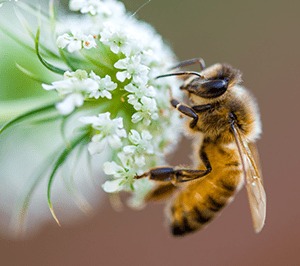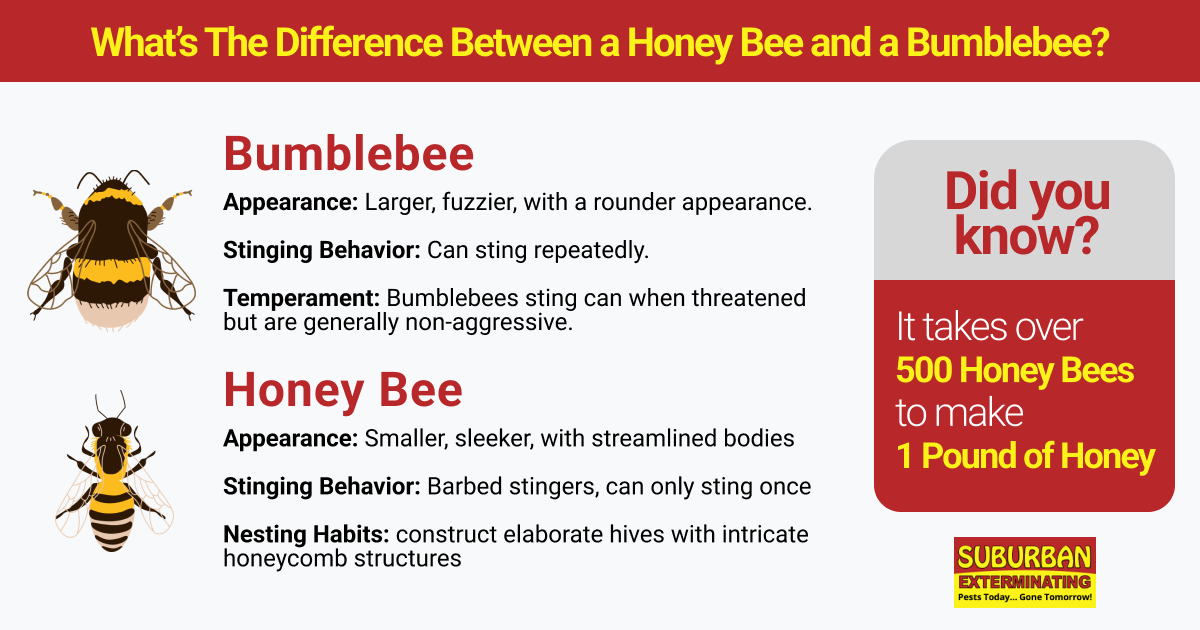
With a staggering array of over 20,000 species, distinguishing between various types of bees can be quite a challenge. From physical characteristics to habitats, pollination habits, and behaviors, each bee species has its own unique traits. In this guide, we’ll delve into the world of two commonly confused bee species—honey bees and bumblebees—providing insight into their habitats, appearances, behaviors, and more.
What’s the Difference Between a Honey Bee and a Bumblebee?
Honeybees and bumblebees may share some similarities, but several key differences set them apart:
- Social Structure: Honey bees are highly social insects, residing in organized colonies with specific roles assigned to different members, including drones, workers, and a queen. In contrast, bumblebee colonies are smaller and less structured, typically consisting of a queen, workers, and drones.
- Appearance: While both bees sport black and yellow stripes, their physical characteristics vary. Honey bees are generally smaller and sleeker, with more streamlined bodies, while bumblebees are larger and fuzzier, with a rounder appearance.
- Stinging Behavior: Honey bees have barbed stingers that remain lodged in their victim’s skin upon stinging, leading to the bee’s demise. In contrast, bumblebees possess smooth stingers, allowing them to sting repeatedly without consequence.
- Nesting Habits: Honey bees construct elaborate hives with intricate honeycomb structures, often housed in tree hollows or man-made beehives. Bumblebees, on the other hand, typically nest underground in abandoned rodent burrows or surface-level clumps of grass.
Need an Estimate for Bee, Wasp & Hornet Control?
How Do I Tell Honey Bees and Bumblebees Apart?
Distinguishing between honey bees and bumblebees can be challenging at first glance, but several telltale signs can help:
- Body Size and Shape: Honey bees are relatively smaller and more slender, with elongated bodies and less pronounced fuzziness. In contrast, bumblebees are larger and plumper, with robust bodies covered in dense hair.
- Abdomen Appearance: Pay attention to the shape of the abdomen. Honeybees have elongated, tapered abdomens, while bumblebees boast rounded, bulbous abdomens.
- Flight Patterns: Observing their flight behavior can provide clues. Honeybees tend to fly swiftly and directly between flowers, while bumblebees exhibit a more erratic and zigzagging flight pattern.
- Nesting Sites: Consider the location of the bee’s nest. Honey bee hives are typically located above ground in tree hollows or man-made structures, whereas bumblebee nests are often found underground or at ground level.
Do All Bees Make Honey?
Contrary to popular belief, not all bees produce honey. While honey bees are renowned for their honey-making abilities, other bee species have different dietary preferences and behaviors:
- Honey Bees: These industrious insects indeed create honey as their primary food source. They collect nectar from flowers, process it within their bodies, and store it in honeycomb cells for future consumption.
- Bumblebees: While bumblebees are capable of producing honey, their honey-making process differs from that of honey bees. Bumblebee colonies typically produce small quantities of honey for their own consumption rather than large surplus stores like honey bee colonies.
Honey Bee and Bumblebee Removal in Long Island
Suburban Exterminating understands the importance of the bumblebee and honeybee populations to our environment and always treats bee concerns with the utmost care. We’ve developed strict protocols for the protection of pollinators, which is why we don’t treat honey bee hives. Instead, we recommend our clients contact professional beekeepers who are delighted to harvest bee hives for their own use. This method ensures the potential bee threat is removed, and the bees are utilized beneficially. The Long Island Beekeepers Club is very helpful in providing information to the public in this regard.
Regarding bumblebees, when the location of their nest is proven to be a threat, Suburban Exterminating will treat them after evaluating the situation. Simply finding bumblebees or other pollinators foraging in flower beds or shrubs is not cause to interfere with their behavior. Often, we suggest ways for our clients to lure foraging pollinators away from areas people frequent using sugar or fruit-based lures which can help “guide” pollinators to a different area. In some cases, we’ve even recommended removing plants away from doors and along paths to minimize human-to-pollinator conflicts!
If you have any questions about a bee problem you’re facing or our bee control services, we’re happy to help contact us today!
Back to Bee, Wasp, & Hornet Exterminators – Control – Removal
